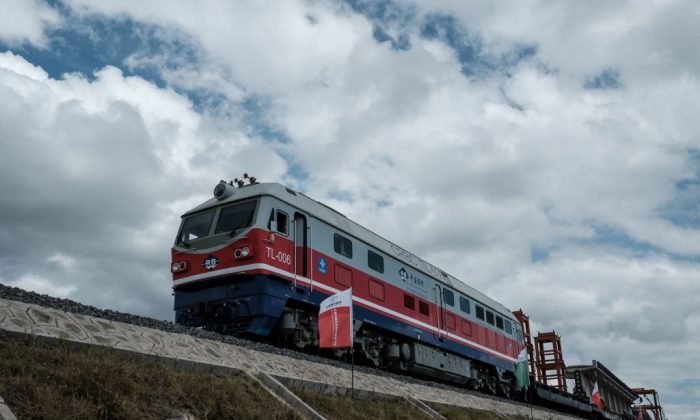A locomotive at the construction site of the Standard Gauge Railway (SGR) in Nairobi, Kenya, on June 23, 2018. (Yasuyoshi Chiba/AFP/Getty Images) The 2018 Forum On China-Africa Cooperation held in Beijing from Sept. 3 to 4 ended with much hype as Beijing pledged $60 billion in aid and loans to African nations. However, behind the fanfare are social and economic problems that these African countries face as a result of Chinese investment—as in the case of Kenya.
As a way to relieve the country from its debt, Kenyan President Uhuru Kenyatta, while in Beijing, asked China to split the $3.8 billion cost for building the next phase of the Standard Gauge Railway (SGR) into 50 percent loans and 50 percent grant, according to a Sept. 5 article by Kenya’s largest independent newspaper Daily Nation.
Phase one of the SGR, a roughly 300-mile (485-km) long railway connecting Kenya’s capital Nairobi and the coastal city of Mombasa, was built at a cost of $3.2 billion with Chinese financing and inaugurated in June 2017, according to Reuters . China’s state-run Export-Import Bank of China paid for 90 percent of the cost, and the Kenyan government paid the remaining 10 percent.
The first part of phase two, a roughly 75-mile (120-km) railway linking Nairobi to Naivasha, a town located in the northwest of Nairobi, is currently under construction.
Mombasa eventually will serve as a trade gateway in East Africa, as the SGR will link to railways in Uganda, Rwanda, Burundi, Democratic Republic of Congo, South Sudan, and Ethiopia.
The second part of phase two—the next phase that is slated for $3.8 billion—is a railway linking Naivasha and Kisumu, a port city on Lake Victoria, a body of water bordered by three African nations: Uganda, Kenya, and Tanzania.
With Kenya’s public debt reaching about $50.6 billion, Kenyatta has been criticized for irresponsibly borrowing from Beijing, according to Daily Nation. If China were willing to foot half of the bill in the form of grants, Kenyatta said taxpayers in his country would only need to pay for half of it, or $1.9 billion.
The SGR is part of China’s “One Belt, One Road” (OBOR, also known as Belt and Road), Beijing’s massive investment initiative with countries throughout Asia, Europe, Africa, and some Latin American countries. Kenya is considered a strategic point in the maritime trade route laid out in OBOR plans, which runs from China to Vietnam, Malaysia, Indonesia, Sri Lanka, Kenya, […]
